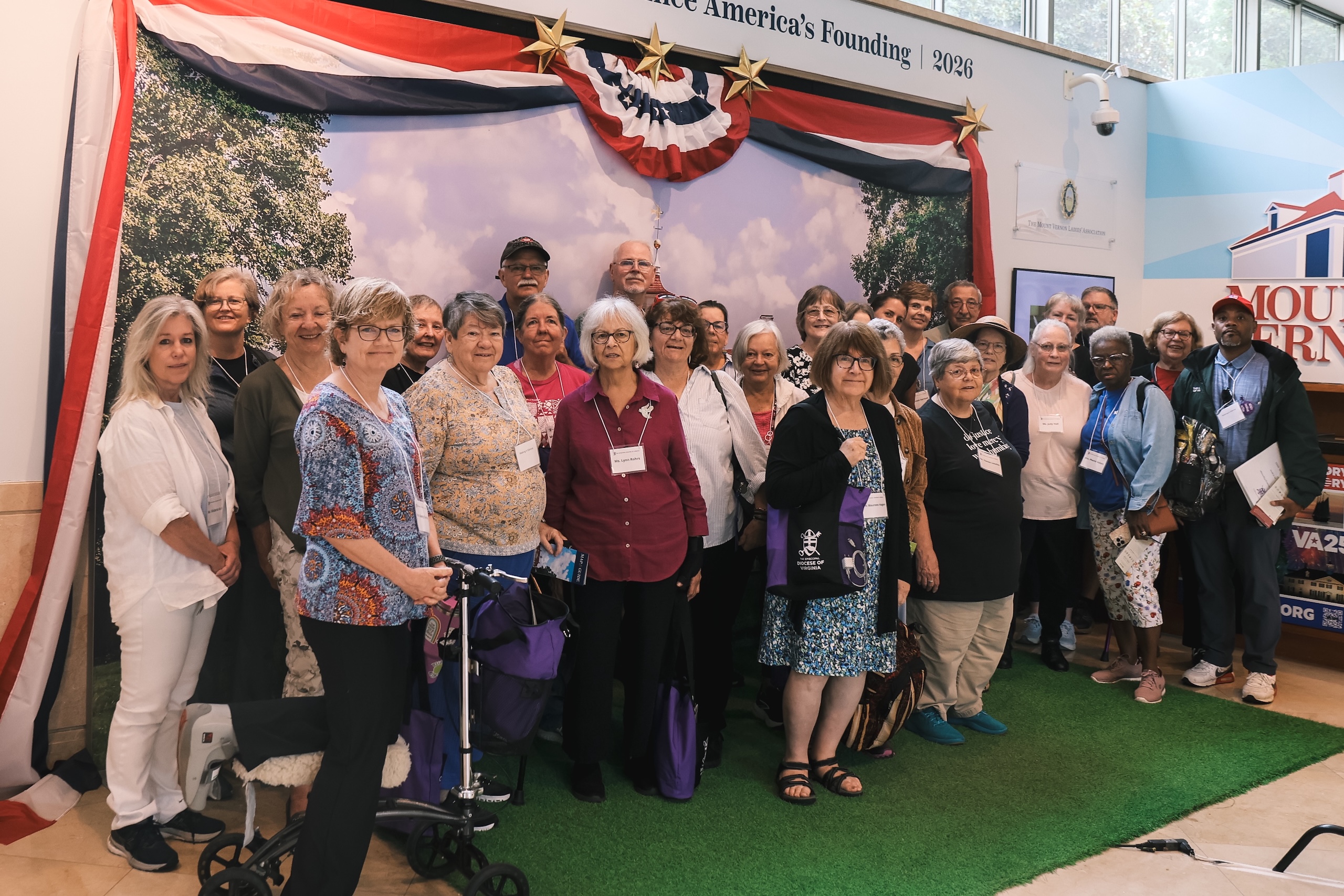
After a 2022 pilgrimage to Memphis, Birmingham, Selma, and Montgomery, the Diocese of Virginia recognized a pressing need to address the history of racial injustice within its own borders. The diocesan principles—Love Jesus. Embody justice. Be disciples. —made the need more urgent and sparked the preparation for a local pilgrimage.
For five days in fall 2025, 28 pilgrims moved among historic sites in and around Richmond, confronting more than 400 years of injustice toward Indigenous peoples and kidnapped and enslaved Africans.
“We also bore witness to the incredible resilience of those who endured such oppression—through the stories we encountered and the strength of their descendants,” said Dr. J. Lee Hill, Jr., Canon for Racial Justice and Healing for the Diocese of Virginia.
The group also absorbed the enduring modern-day consequences of these historical beliefs, systems, and events, while striving to uphold the three principles: love Jesus, embody justice, and be disciples.
“Throughout the journey, we were reminded—through worship, discernment, and engagement—that loving Jesus means loving our neighbors, both known and unknown,” Hill added. “We embodied justice by walking the sacred grounds of our ancestors and committing ourselves to ongoing action against hatred in pursuit of becoming a beloved community. Each step of our journey was another step along the path of discipleship.”
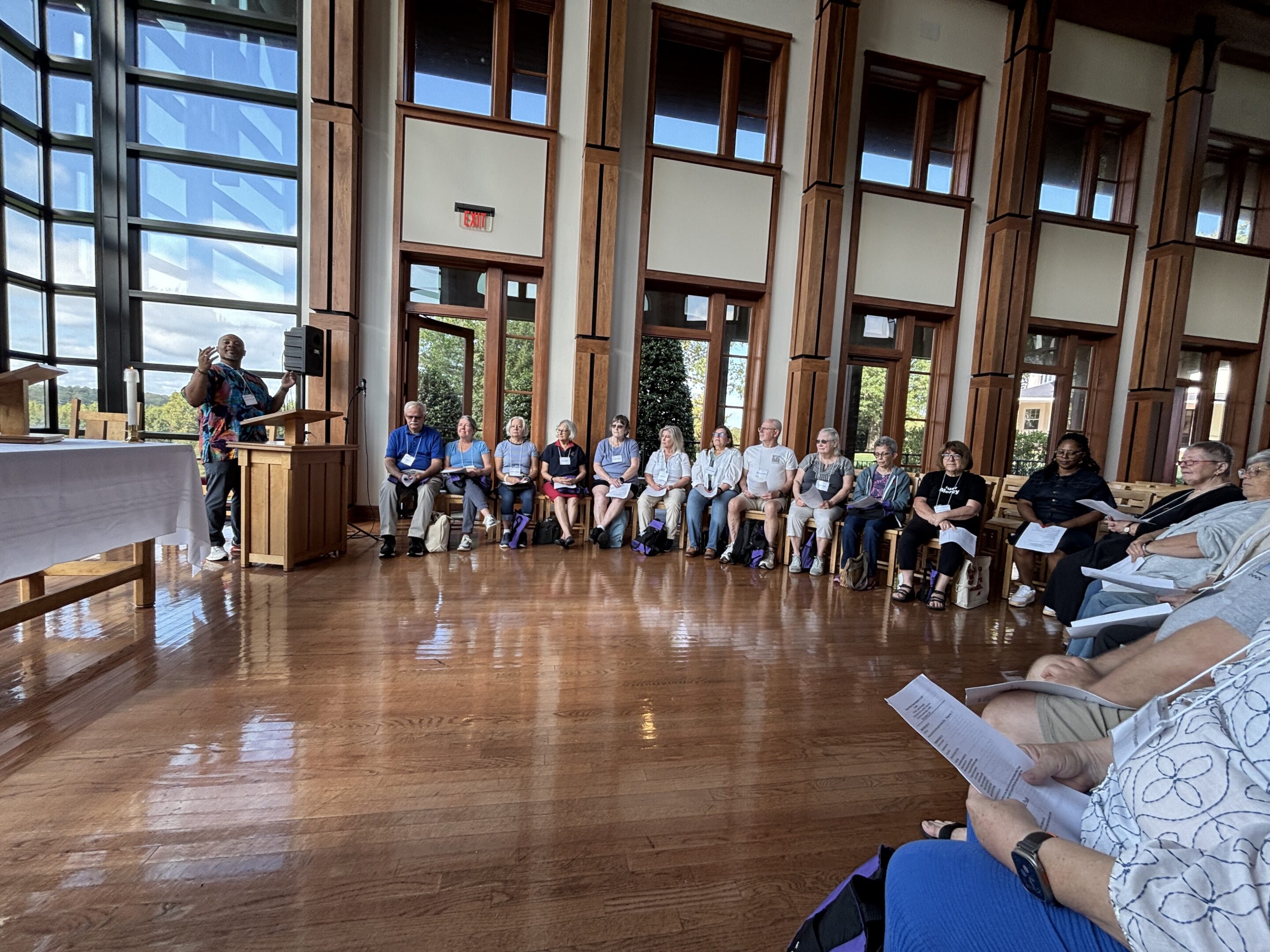
A pilgrimage is a specific kind of spiritual journey, undertaken with the intention of deepening one’s faith and seeking connection with God. It is not a vacation focused on relaxation or personal enjoyment, nor simply a “trip.”
“The fact that we were on pilgrimage shaped every aspect of our activities,” Hill added.
Diocesan retreat center Roslyn served as the home base of the pilgrimage, which allowed ample time for reflection, discussion, and discernment. The group committed themselves to centering race in their reflections and intentionally redirected conversations back to that focus whenever they slipped into more comfortable or familiar topics.
Day 1: Indigenous Resilience and Liturgy
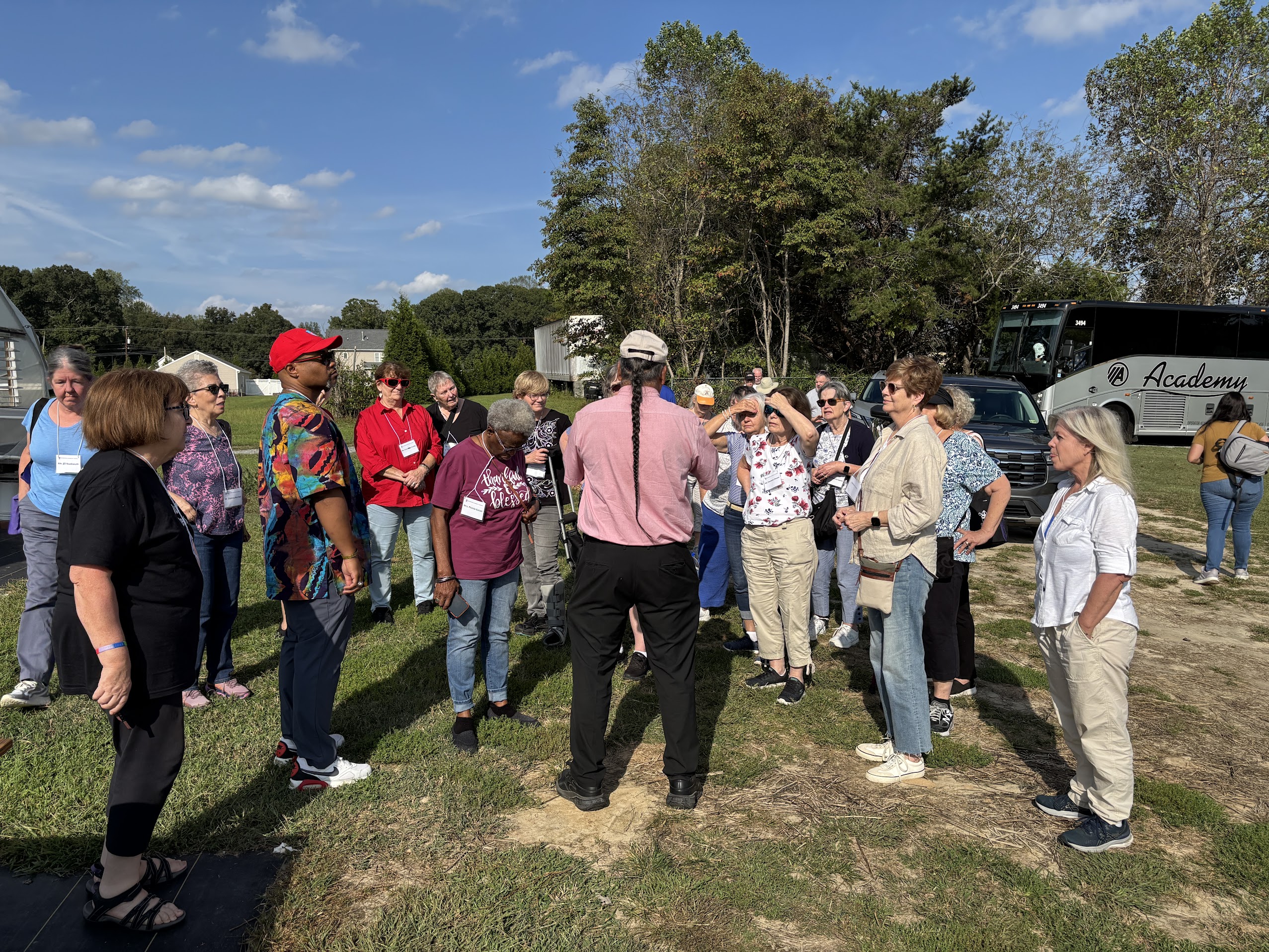
The pilgrimage began with visiting the Upper Mattaponi Tribe and the Mattaponi Indian Tribe and Reservation in King William County.
Chief Frank Adams guided the group on a tour of the Sharon School, Indian View Baptist Church, and Community Garden. He shared the history of his people, the challenges they continue to face, and their resilience in supporting their community through a medical clinic, dental clinic, and pharmacy.
The group traveled to the Mattaponi Reservation downriver, where they participated in a liturgy for Indigenous peoples along the banks of the Mattaponi River.
Day Two: Commerce and Resistance of Enslavement
The group focused on the history of slavery in Richmond, particularly through Walking with the Enslaved: A Pilgrimage toward Truth, Reconciliation, and Hope in Richmond—a collaborative initiative between Richmond’s St. Philip’s Episcopal and St. Paul’s Episcopal Churches.
The first stop was the Trail of the Enslaved / Manchester Docks, where the first enslaved Africans arrived via the James River to be sold into labor, part of the transatlantic slave trade.
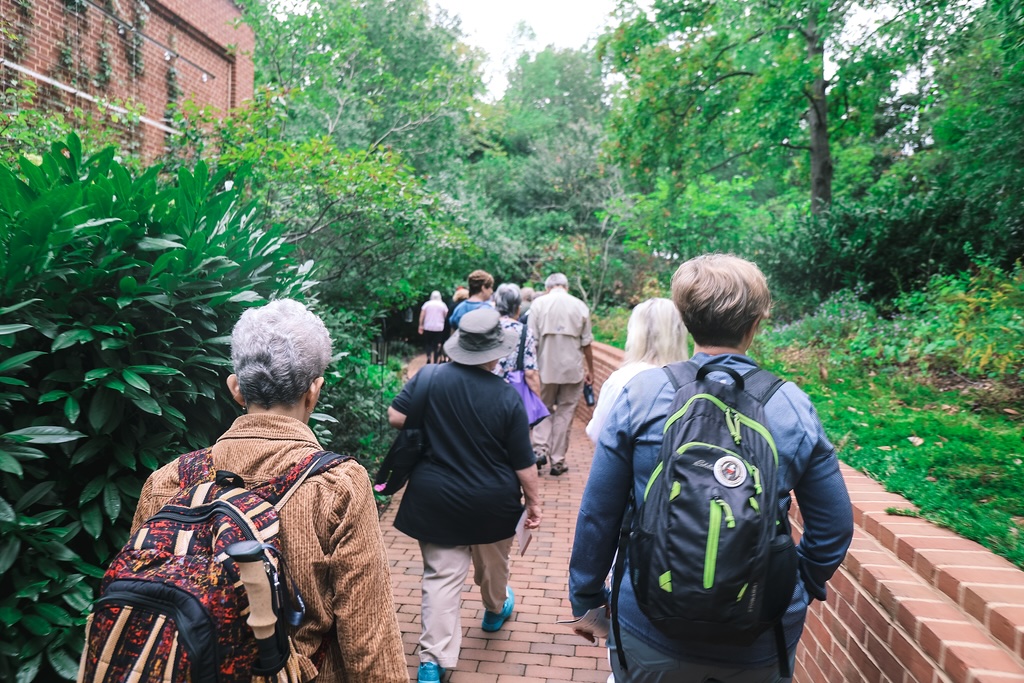
“From there, we walked a half mile in silence, connected by hands on each other’s shoulders,” said The Rev. Gwynn Crichton, Associate Rector for Community Engagement at St. Paul’s. “At the end of the trail, Shauntae Lilly, the program’s vocalist, sang Wade in the Water, one of several African American spirituals shared along the route.”
Additional stops included the Virginia State Capitol, Monumental Church, Historic First African Church, and the Virginia Governor’s Mansion where the group encountered the realities of urban enslavement in the former capital of the Confederacy. They heard stories of those who resisted and south liberation for themselves and others, including Gabriel Prosser, Henry “Box” Brown, and Mary Ann Lumpkin.
The final stop was Shockoe Bottom, the site of the African Burial Ground and Lumpkin’s Slave Jail. Between 1830 and 1865, among parking lots and highway overpasses, this was the location of the East Coast’s largest domestic slave market—also known as “Wall Street”—where more than 300,000 enslaved persons were imprisoned, bought, and sold.
The Shockoe Project is currently planning a comprehensive, experiential 10-acre campus, including a National Slavery Museum, to uncover and tell the truth of this history, recognizing and preserving the experience of enslaved and free Africans and people of African descent.
Day 3: George Washington and Christ Church’s Legacy of Slavery
The pilgrimage visited Mount Vernon, home to the first US President, and Historic Christ Church in Alexandria.
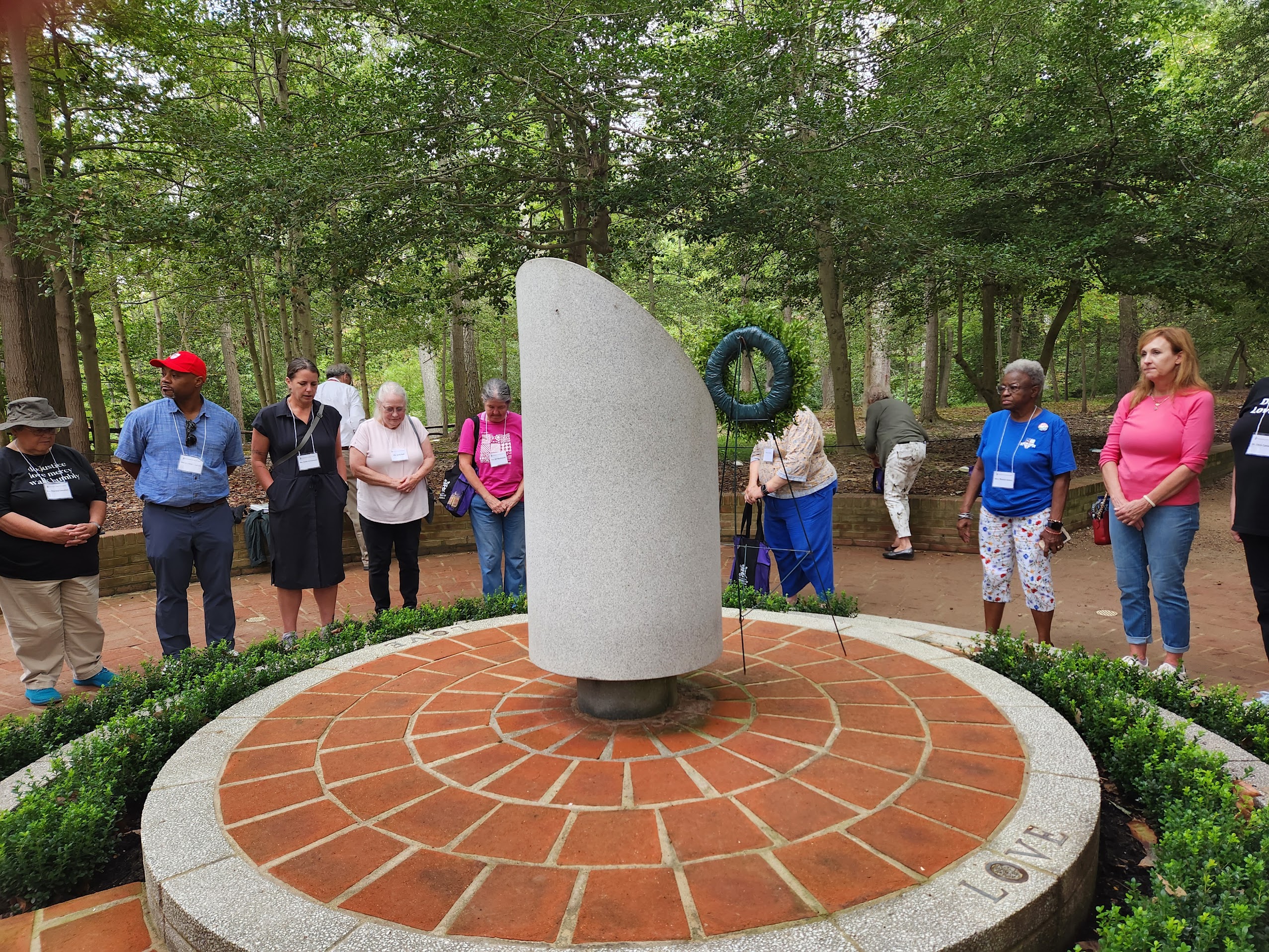
The group participated in The Enslaved People of Mount Vernon tour, which culminated in a tribute at the Slave Memorial and African American Burial Ground. The 1983 memorial comprises three circles, symbolizing faith, hope, and love. Pilgrims took turns reading the stories of four individuals who had been enslaved there, after which the group placed a boxwood wreath in their honor.
The group toured Christ Church Alexandria, founded in 1765 and attended by George Washington and Robert E. Lee. They learned about the congregation’s ongoing process of reckoning with its complex racial history, including the labor of enslaved people in constructing the property. The group discussed the theological and moral tensions that arise from having prominent enslavers as part of a church’s legacy.
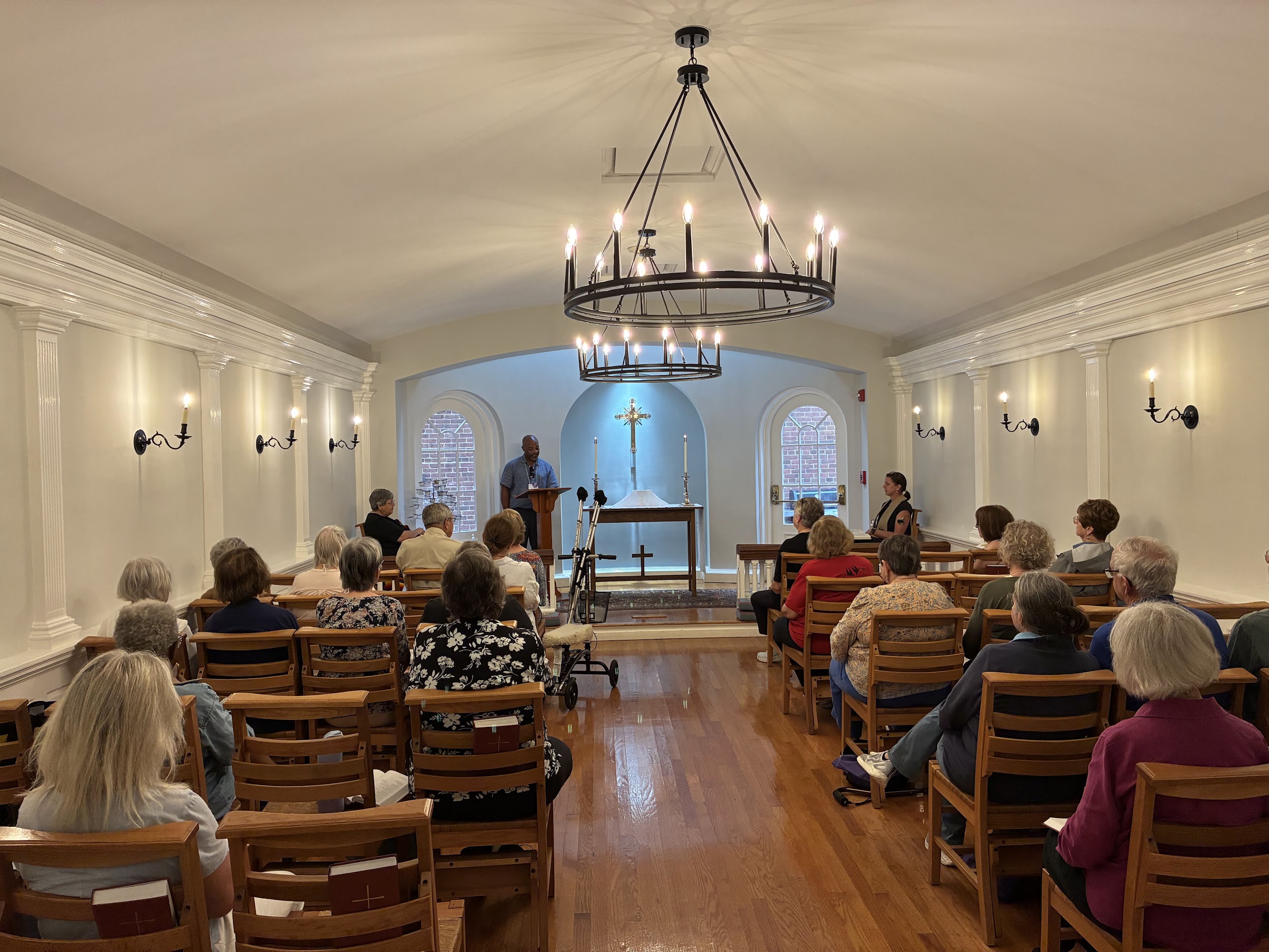
The third day concluded with a Eucharist in the Christ Church chapel.
Day 4: Charlottesville and UVA’s Unpaid Laborers
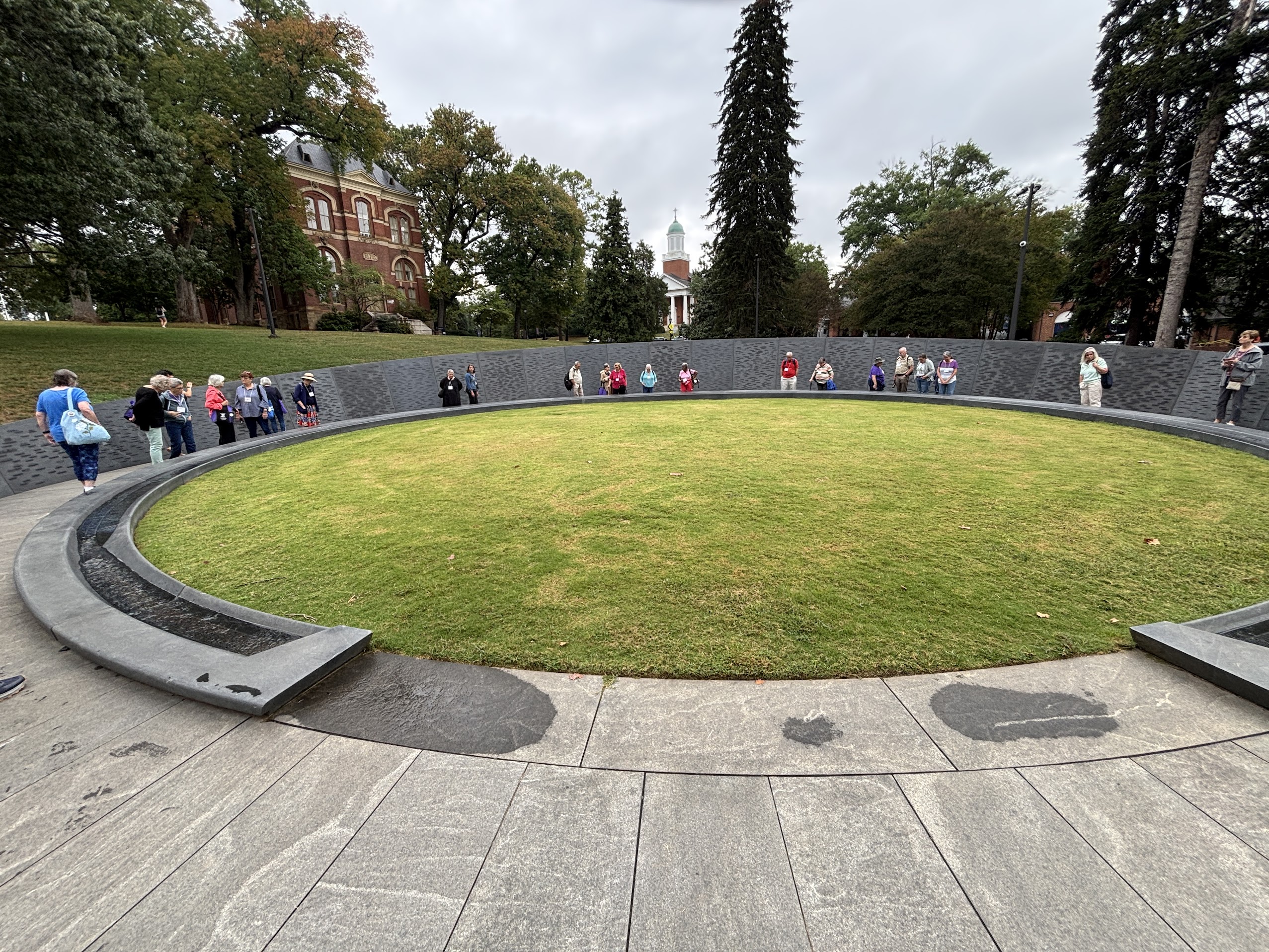
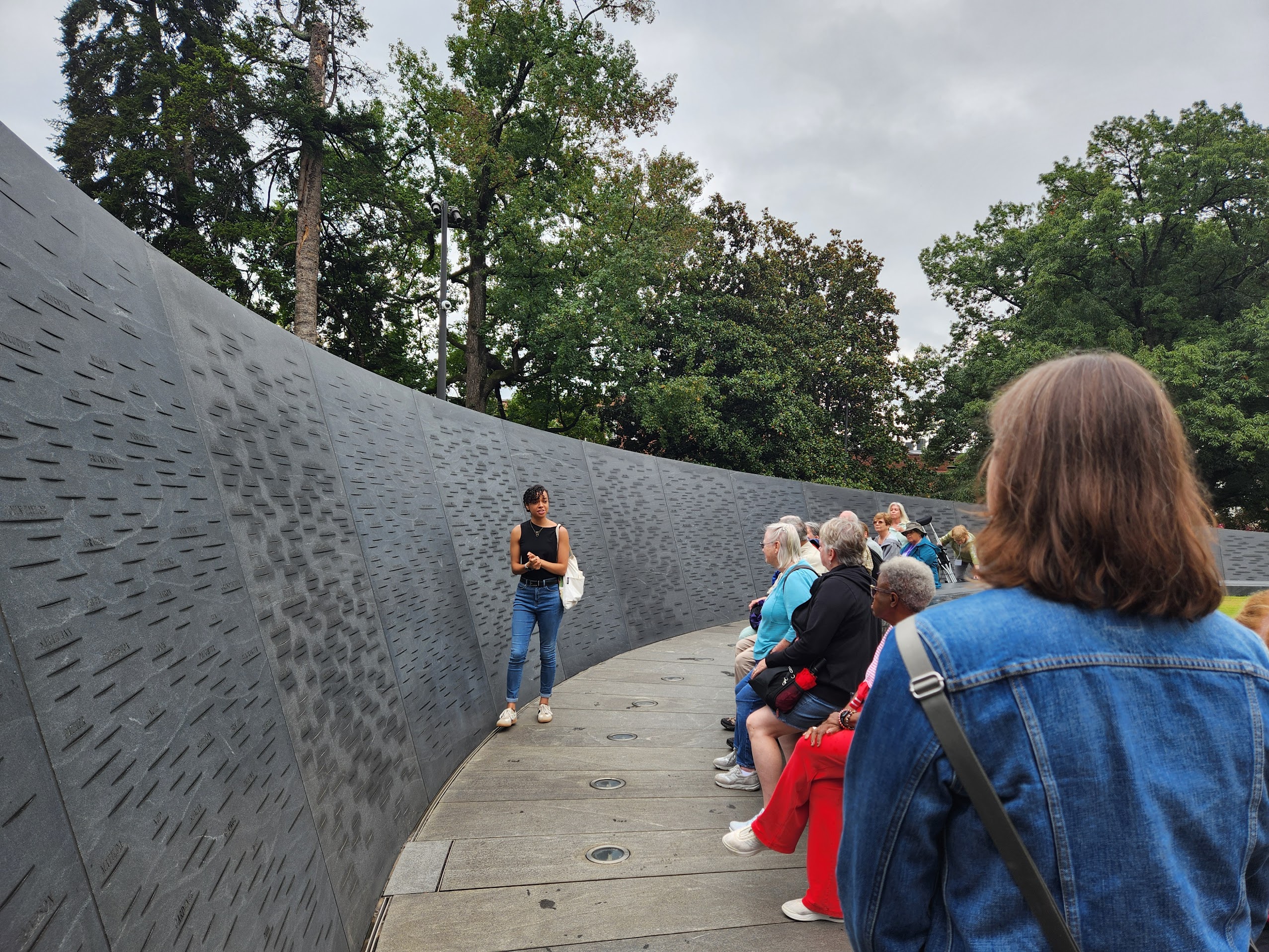
The group next visited the Memorial to Enslaved Laborers on the University of Virginia campus, where docent Jessica Harris, president of the Descendants of Enslaved Communities at UVA, shared the history of the 4,000 enslaved individuals who lived and worked on campus between 1817 and 1865.
The memorial features a circular design matching the diameter of UVA’s famous Rotunda. The wall reaches eight feet at its highest point, reflecting the historical wall height meant to hide enslaved laborers from public view.
The memorial features three circles. The grassy inner circle is for gathering, where the group held prayer. A second circle features a water element and a timeline of key events—ranging from the 1619 arrival of enslaved Africans in Virginia to UVA-specific data, such as the 1850 census, which documented enslaved individuals being held by 42 professors, 37 hotelkeepers, and 14 university entities.
The final event on the timeline is the 1889 death of Isabella Gibbons, a formerly enslaved woman whose remarkable life story is woven throughout the memorial. The third circle is a granite wall containing identities of enslaved people—full names when known, or first names, vocations, or relationships when unknown. Most engravings are empty lines representing enslaved people who have not yet been identified.
Next, the group toured Montpelier, the home of James and Dolley Madison. They visited The Mere Distinction of Colour exhibition on the over 300 people enslaved by the Madisons, and the South Lawn Dwellings, where some enslaved people lived. These exhibits offered a powerful and sobering look into the immense labor that sustained the Madison estate and James Madison’s political life.
Enslaved people worked the land, managed the household, and supported the family and their guests. Madison’s legacy as the “architect of the Constitution” was built on the labor of hundreds of enslaved people.
Day 5: Return to “Love Jesus. Embody justice. Be disciples”
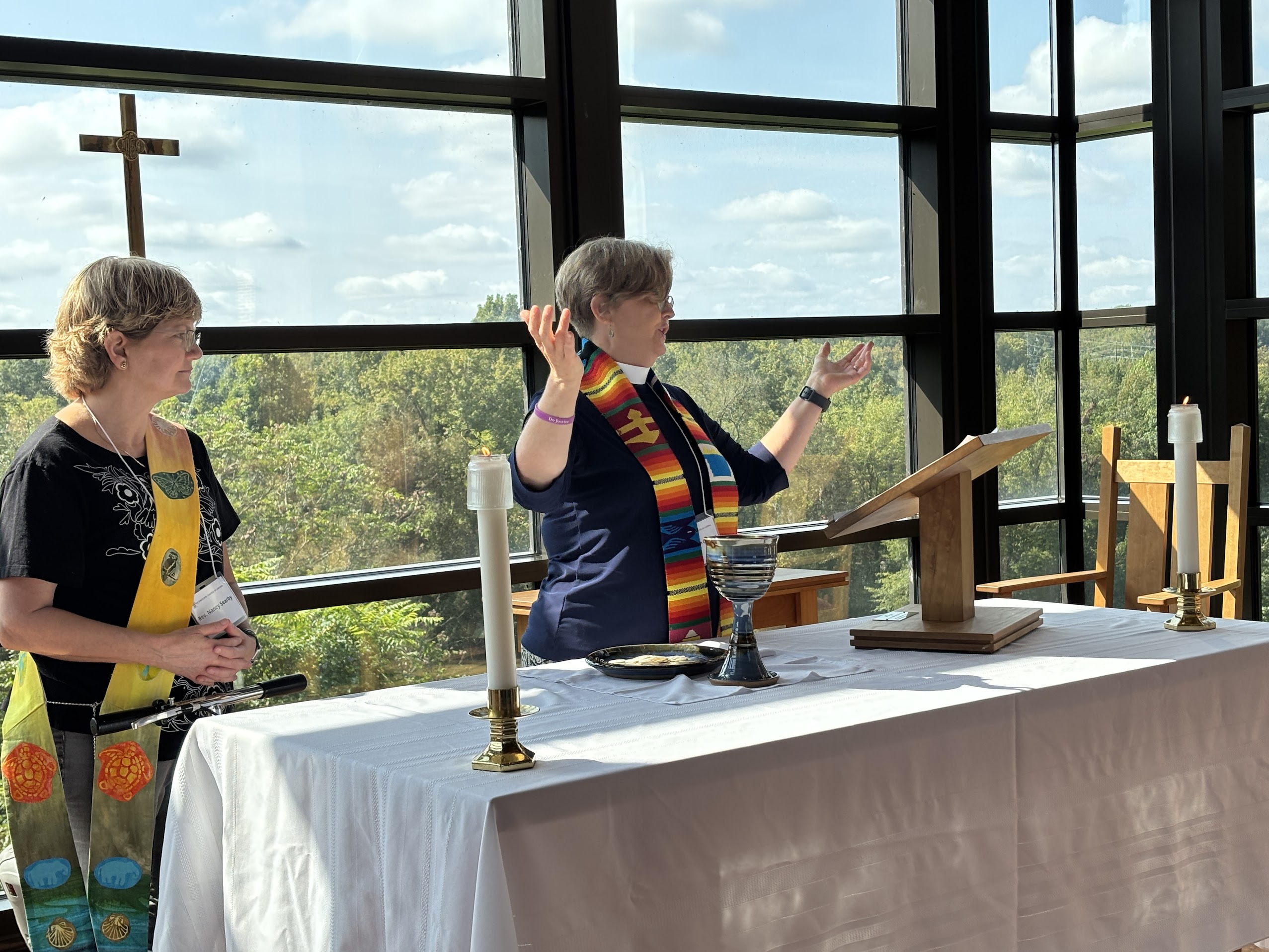
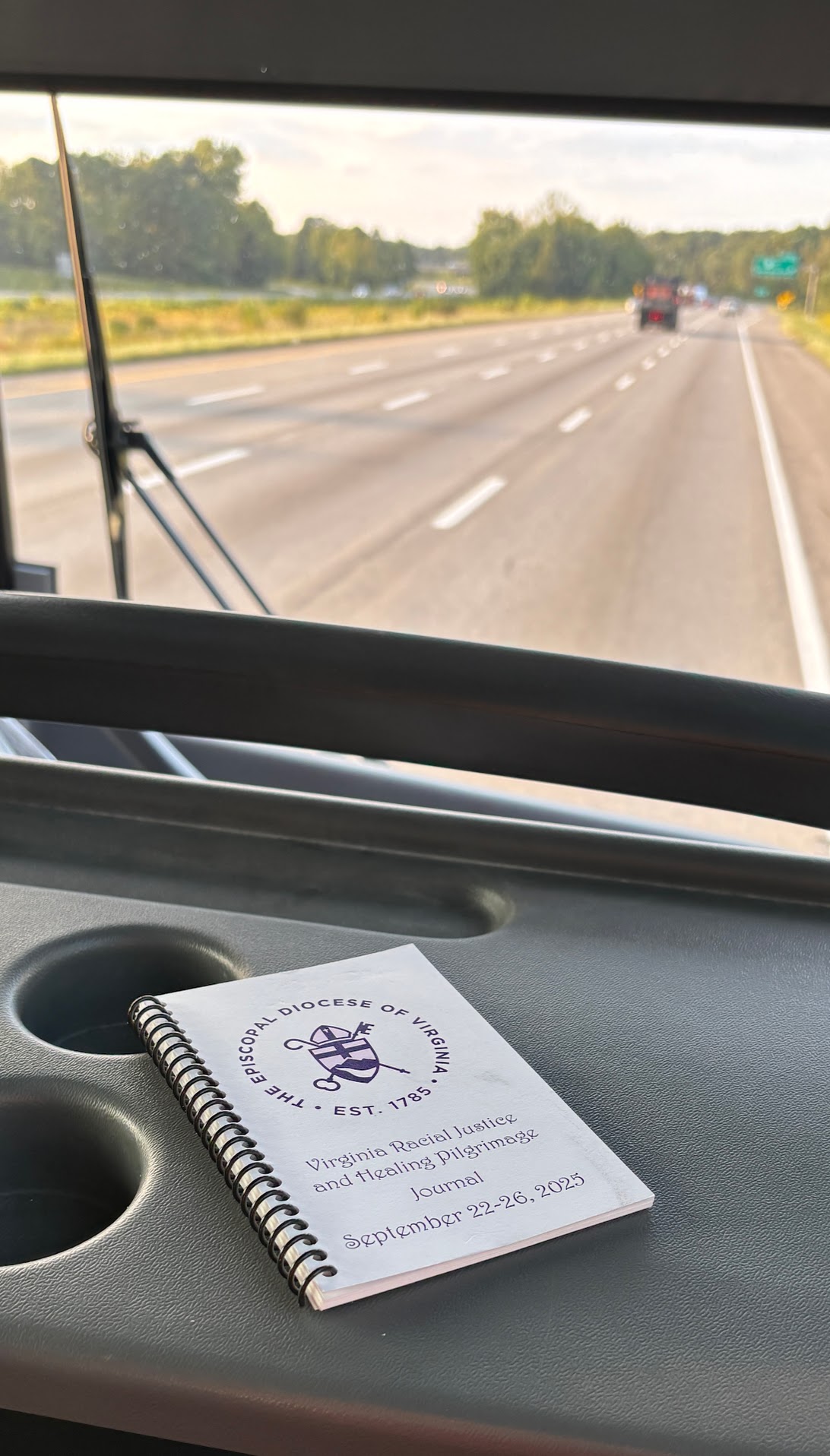
The final day was dedicated to worship, reflection, and a renewed commitment to racial justice and healing. To “Love Jesus. Embody justice. Be disciples” are not only principles they strive to uphold during this pilgrimage in and around Richmond but going forth in their lives and communities.
The group concluded the pilgrimage with the resolve to carry the transformation they experienced back into their own communities—to continue the work, tell the stories, and walk the path of discipleship in pursuit of God’s Beloved Community.